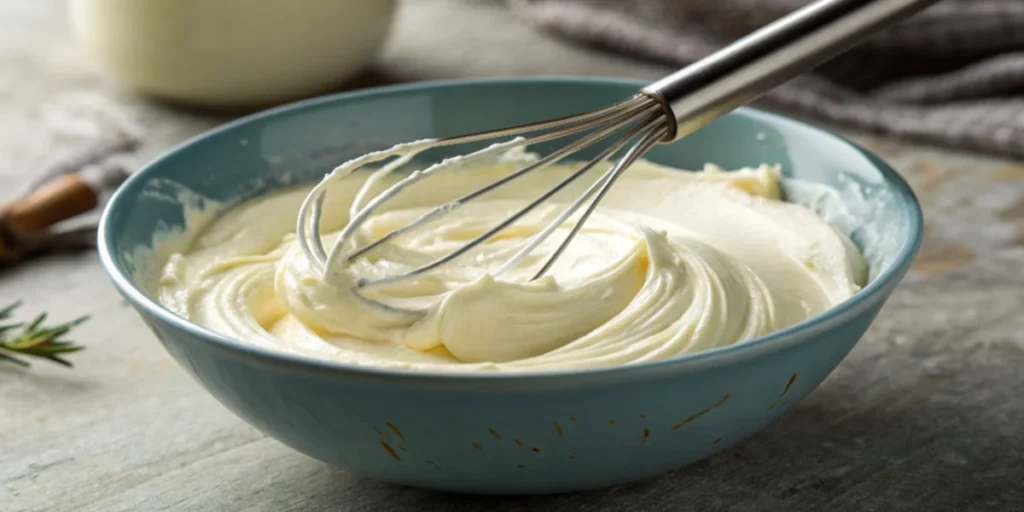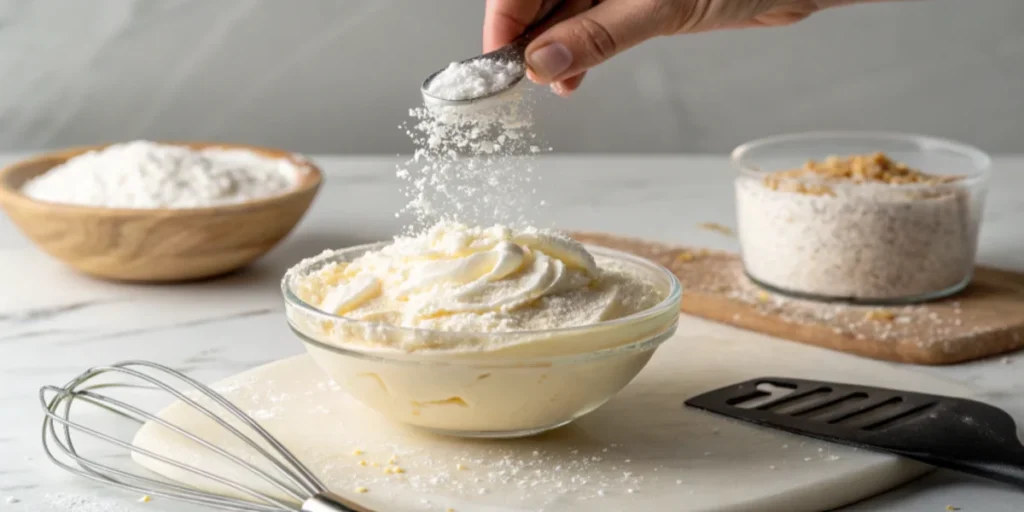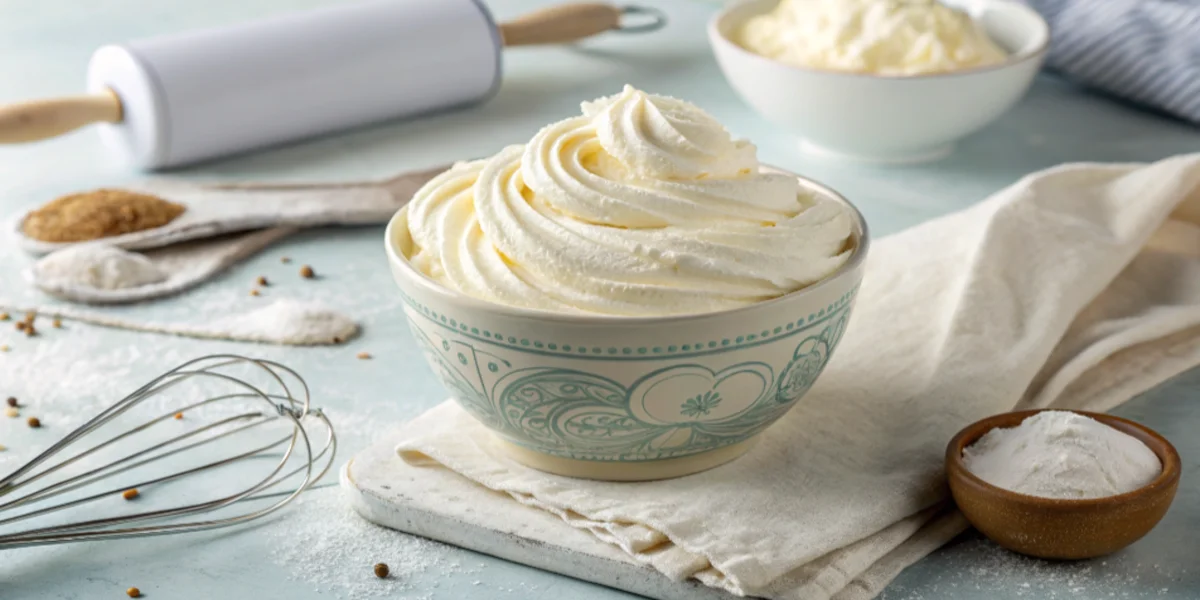There’s nothing quite like the smooth, tangy magic of cream cheese filling in desserts, right? But let’s be real—sometimes it doesn’t behave the way we want. One moment, it’s looking luscious and perfect; the next, it’s runny enough to make you question your entire recipe. If you’re wondering how to firm up cream cheese filling, don’t worry—you’re not alone. (Been there, done that!)
If you’ve ever wondered how to firm up cream cheese filling without turning your kitchen into a science lab, you’re not alone. Whether it’s for a cheesecake, frosting, or stuffed pastries, the goal is that dreamy, stable texture that holds its shape.
In this guide, I’ll break down why cream cheese filling goes soft in the first place, plus share some no-fail tips to fix it. Trust me, by the end of this, you’ll have that creamy consistency nailed—and maybe a few bonus ideas for saving the day if things don’t go as planned. Ready? Let’s tackle this cream cheese conundrum together!
Why Cream Cheese Filling Doesn’t Always Set Right

Okay, let’s talk about why cream cheese filling sometimes takes a nosedive into runny territory. It’s super common, so don’t beat yourself up—it happens to the best of us! If you’ve been struggling with how to firm up cream cheese filling, here are the top reasons your cream cheese filling might not be cooperating.
If this resonates, check out why pecan pie is so delicious to explore complementary flavors and textures.
Over-Mixing Can Be a Problem
You know how you’re supposed to mix until smooth? Well, sometimes we get a little too enthusiastic with the mixer. Over-mixing actually breaks down the cream cheese and introduces too much air, which can thin out the texture. Instead of smooth and creamy, you might end up with something closer to soup—not exactly what you want when figuring out how to firm up cream cheese filling. Not fun.
Pro Tip: Keep mixing on low speed and stop as soon as everything is blended. A little patience goes a long way here!
High-Moisture Ingredients Sneak In
Adding wet ingredients like heavy cream, sour cream, or even vanilla extract is tempting because they enhance flavor and texture. But if you go overboard, you’re adding a lot of liquid that your cream cheese just can’t handle. The result? A filling that refuses to firm up, leaving you searching for ways on how to firm up cream cheese filling.
Pro Tip: Try to balance these ingredients. If you add something with moisture, you might need to compensate with a thickening agent (we’ll get into that in a bit).
Temperature Issues Mess Things Up
Temperature matters—a lot. If your cream cheese is too soft (read: almost melted), it won’t hold its structure. The same goes for other ingredients that are either too warm or too cold. This mismatch makes it hard to create a stable filling.
Pro Tip: Make sure everything is at room temperature before you start. Cold cream cheese doesn’t mix well, and overly warm cream cheese? Disaster waiting to happen.
How to Fix Runny Cream Cheese Filling
Alright, so your cream cheese filling didn’t quite turn out the way you planned. Don’t stress—it’s totally fixable! Here are some tried-and-true methods to get that creamy goodness to firm up.
Tweak the Ingredients for a Better Balance
Sometimes, the solution is as simple as adjusting your recipe. If you’ve added too much liquid (think heavy cream or sour cream), the texture might not hold up. To fix this and learn how to firm up cream cheese filling, try reducing the liquid content or adding more cream cheese to balance it out.
For a recipe with balanced ratios, explore this guide to creating the perfect cream cheese filling.
Quick Tip: A good rule of thumb is to keep the ratio of cream cheese to liquid ingredients at around 2:1 for most fillings.
Use a Thickening Agent

If you need to rescue a runny filling fast, thickening agents are your best friend. Here’s a quick rundown:
- Powdered Sugar: This is great for frostings because it thickens and sweetens at the same time. Add it a little at a time and mix until you get the right consistency.
- Cornstarch: Dissolve a teaspoon in a bit of cold water, then mix it into your filling. It works like magic to stabilize things.
- Gelatin: For serious reinforcement, dissolve a bit of unflavored gelatin in warm water and fold it into your filling. It’ll firm up as it chills.
Learn how to balance sweetness and texture in desserts with tips for eating cookies every day.
Chill It Out
If your filling isn’t setting, try popping it in the fridge for 20-30 minutes. The cold helps firm up the cream cheese, especially if it’s been sitting out for too long.
Quick Tip: If you’re working on a cheesecake or something similar, giving it an hour or two in the fridge can work wonders.
Don’t Forget to Blend Gently
Remember earlier when we talked about over-mixing? If your filling is already a little runny, the last thing you want to do is keep mixing. Gentle folds with a spatula are your best bet to avoid making it worse.
Tips to Prevent Runny Cream Cheese Filling From the Start
Let’s be real—prevention is always easier than fixing a mistake. If you’re tired of dealing with runny cream cheese filling, these simple tips will help you nail it every single time.
Start With the Right Cream Cheese
Not all cream cheese is created equal! For the best results, always go with full-fat cream cheese. The reduced-fat versions (or worse, the whipped kind) might seem like a healthier choice, but they’re packed with extra moisture and air—two things that work against you when making a stable filling.
Quick Tip: Let your cream cheese sit out for about 20–30 minutes before using it. You want it softened but still cool, not melting into a puddle.
Measure Your Ingredients Carefully
It’s tempting to eyeball everything, but precision matters here. A little too much heavy cream or vanilla extract, and you’ll throw off the balance. Use a kitchen scale or measuring cups to get everything just right.
Quick Tip: If you’re experimenting with a new recipe, start with smaller amounts of liquid ingredients and gradually adjust if needed.
Keep Everything at the Right Temperature
This one’s huge! If your cream cheese is too cold, it’ll clump. If it’s too warm, it’ll turn soupy. The same goes for other ingredients like butter or whipping cream.
Quick Tip: Aim for room temperature across the board. If you’re in a rush, soften cream cheese in the microwave on a low setting for 10–15 seconds.
Mix Smart, Not Hard
Over-mixing is a sneaky culprit when it comes to runny fillings. Use a low speed on your mixer, and stop as soon as everything is combined. If you’re adding extra ingredients like whipped cream, gently fold them in instead of whipping.
Quick Tip: Scrape down the sides of your bowl frequently to ensure everything is evenly mixed without overworking it.
Chill Before You Fill
Patience pays off when it comes to cream cheese filling. After mixing, let it chill in the fridge for at least 30 minutes before using it. This gives it time to firm up and makes it easier to spread or pipe.
Quick Tip: If you’re using the filling for a layered dessert or pastry, assemble it while the filling is still slightly cool, then chill the entire dessert for best results.
Creative Ways to Save Soft Cream Cheese Filling

Sometimes, even with the best efforts, your cream cheese filling might stay a little softer than you hoped. Don’t toss it just yet! There are plenty of fun (and delicious) ways to repurpose that soft filling.
Transform It Into a Spread or Dip
Certainly, sometimes the solution is as simple as adjusting your recipe.
Nevertheless, if you’ve added too much liquid (think heavy cream or sour cream), the texture might not hold up.
Actually, to fix this and learn how to firm up cream cheese filling, try reducing the liquid content or adding more cream cheese to balance it out.
Idea: Spread it on bagels or toast for a sweet, tangy breakfast option. It’s like frosting for grown-ups!
Use It in Layered Desserts
Certainly, if it’s not firm enough to stand alone, then you should layer it in a dessert.
Additionally, add it to trifles, parfaits, or no-bake cheesecakes.
Hence, the softer texture works beautifully as a creamy base that pairs well with crunchy cookies or fresh fruit.
Pro Tip: Obviously, crushed graham crackers or crushed Oreos make an excellent top or bottom layer for added structure.
Turn It Into a Frosting
For fillings that are close but not quite there, whip in some powdered sugar to make a fluffy cream cheese frosting. Spread it on cupcakes, brownies, or cinnamon rolls, and no one will even notice it wasn’t meant to be a filling.
Quick Fix: If it’s still too soft, toss it in the fridge for 20–30 minutes before frosting.
Blend It Into a Smoothie
Yep, you read that right. If your filling is soft enough, it can double as a creamy addition to your morning smoothie. Blend it with frozen berries, a banana, and a splash of milk or juice for a tangy, protein-packed treat.
Make a No-Bake Pie or Tart
Pour your filling into a pre-made crust, top with fruit or whipped cream, and call it a no-bake dessert. It’ll set up a bit in the fridge, and the crust gives it the structure it needs.
Quick Tip: Use a springform pan for easy removal and a polished presentation.
Serve It as a Dessert Dip Board
Take inspiration from charcuterie boards—create a dessert platter with your soft filling as the centerpiece. Surround it with cookies, fruit, and crackers for a fun, crowd-pleasing snack.
Frequently Asked Questions About Cream Cheese Filling
Here are some of the most common questions about cream cheese filling, answered with simple tips to help you troubleshoot and perfect your recipes.
Why Is My Cream Cheese Filling Runny?
Runny cream cheese filling often happens because of over-mixing, too much liquid, or using low-fat cream cheese. These factors break down the structure of the filling, making it soft and unstable.
Fix: Use full-fat cream cheese, mix gently, and reduce added liquid. If it’s already runny, thicken it with powdered sugar, cornstarch, or gelatin.
Can I Fix a Soft Cream Cheese Filling After It’s Made?
Yes! If your filling is too soft, try chilling it for 30 minutes to an hour. If that doesn’t help, mix in a stabilizer like cornstarch, powdered sugar, or gelatin to firm it up.
Tip: Add the thickener gradually, mixing gently until you reach the desired consistency.
What’s the Best Way to Prevent a Runny Filling?
Start with full-fat cream cheese and let it soften at room temperature. Avoid over-mixing, and measure all ingredients precisely. Keeping everything at room temperature also helps create a smooth, stable filling.
Tip: Always chill your filling after mixing for the best texture.
Can I Use Low-Fat or Whipped Cream Cheese?
You can, but be prepared for a softer filling. Low-fat and whipped cream cheese have higher moisture content and less structure, which makes it harder to achieve a firm texture.
Tip: If you need to use these options, consider adding a stabilizer like gelatin or using less liquid in the recipe.
Why Won’t My Cream Cheese Filling Hold Its Shape When Piped?
If your filling isn’t firm enough to pipe, it’s likely too warm or lacks structure. Warm cream cheese or too much liquid makes it hard to hold a shape.
Fix: Chill the filling for 30 minutes before piping, or add powdered sugar or cornstarch to thicken it.
Can I Freeze Cream Cheese Filling?
Yes, but freezing can slightly change the texture of cream cheese. When thawed, the filling might become grainy or watery. It’s better to use it fresh or refrigerate it for a couple of days instead.
Tip: If you freeze it, thaw it slowly in the fridge and give it a good stir to restore its consistency.
Wrapping It All Up
There you have it—a complete guide to firming up cream cheese filling and avoiding the dreaded runny texture. Whether you’re making a cheesecake, frosting, or stuffed pastry, these tips will have you mastering that smooth, creamy consistency every time.
Remember, the key is to use full-fat cream cheese, keep your ingredients balanced, and mix with care. And hey, if things don’t go as planned, you now have plenty of creative ways to turn a soft filling into something just as delicious.
So, the next time your cream cheese filling gives you trouble, don’t sweat it! You’ve got all the tools and tips to fix it like a pro. Now, go enjoy that tangy, dreamy goodness—it’s what desserts are all about!

